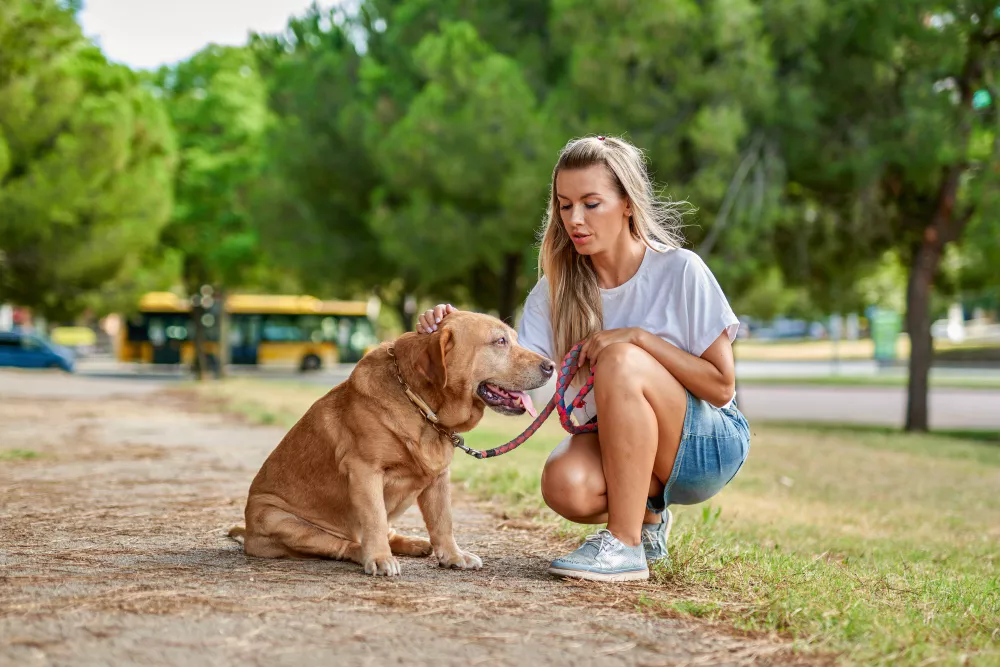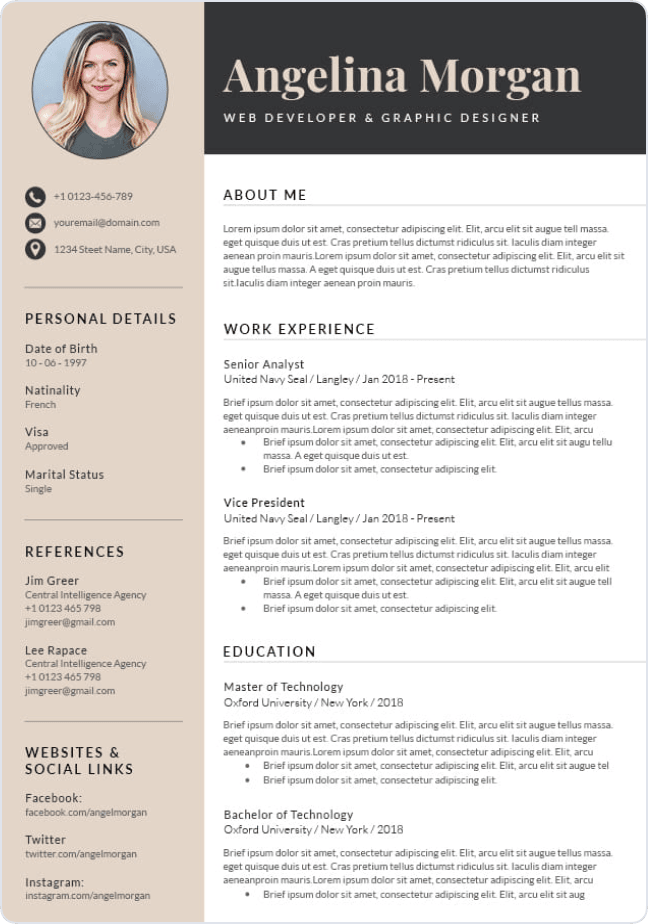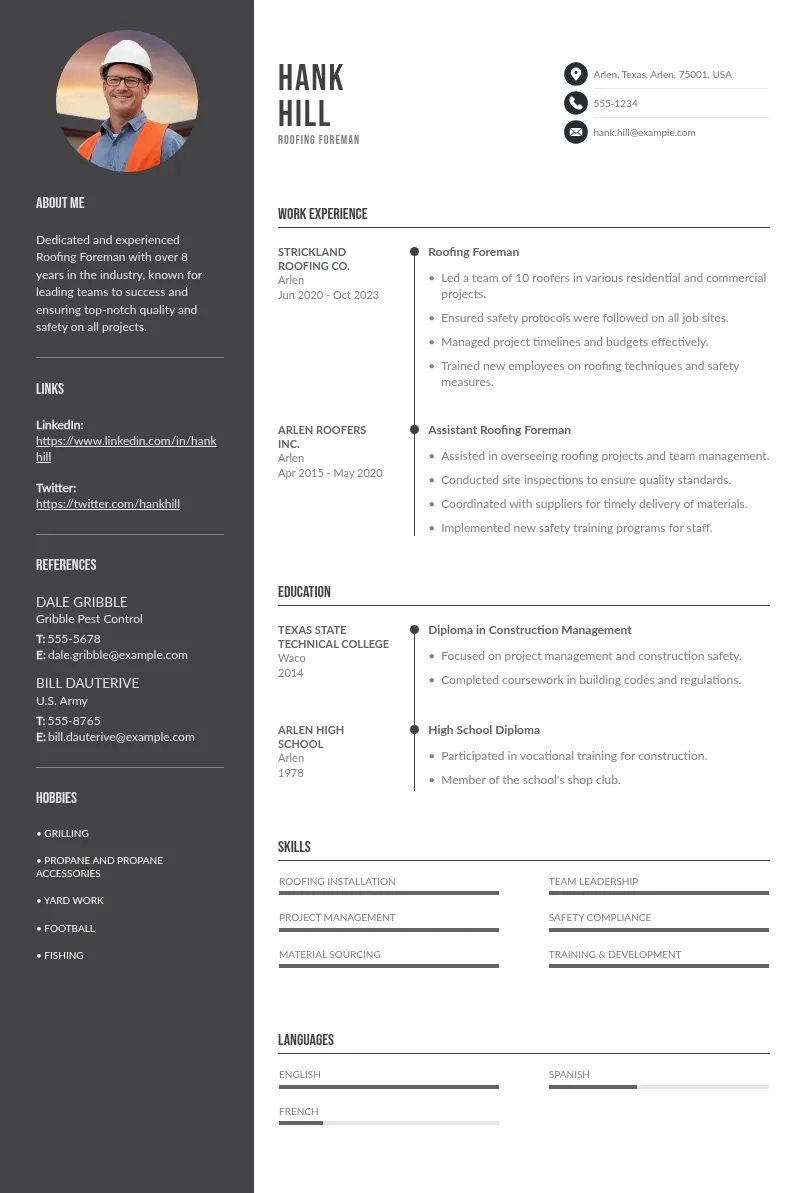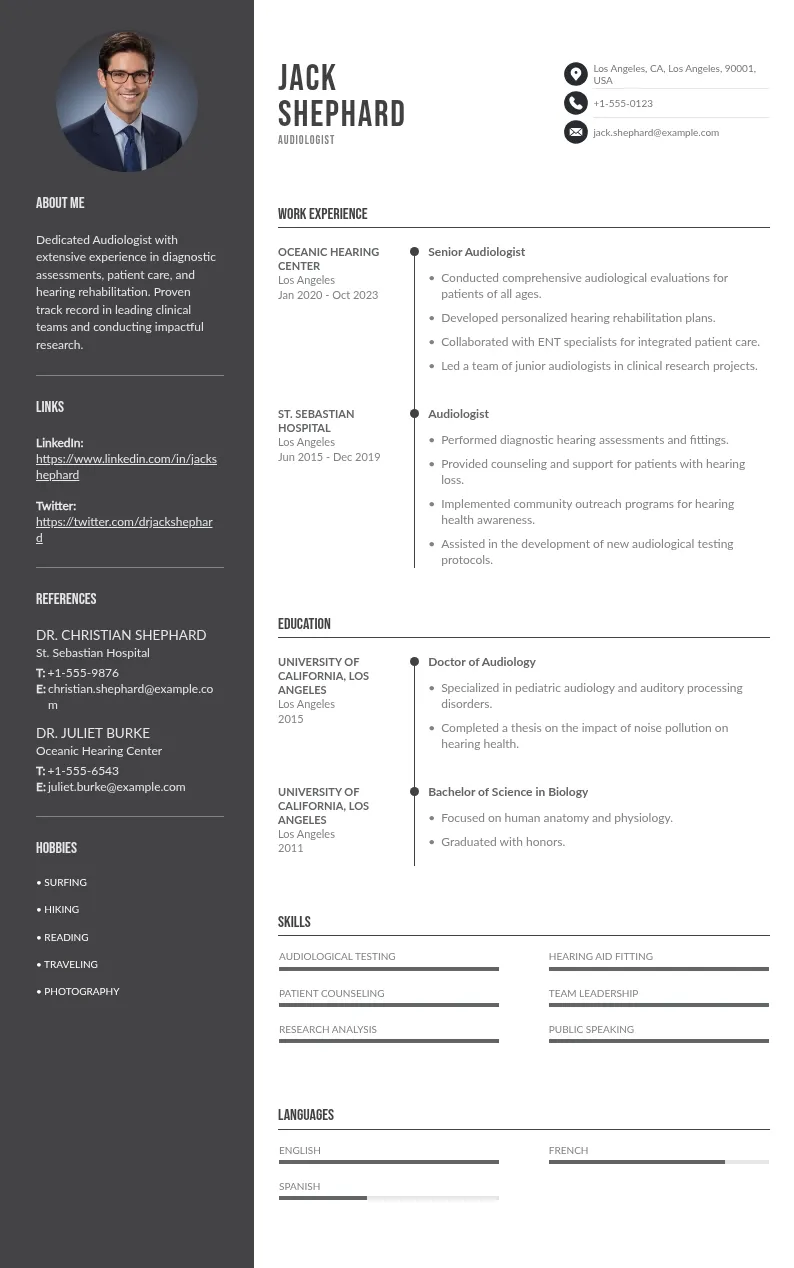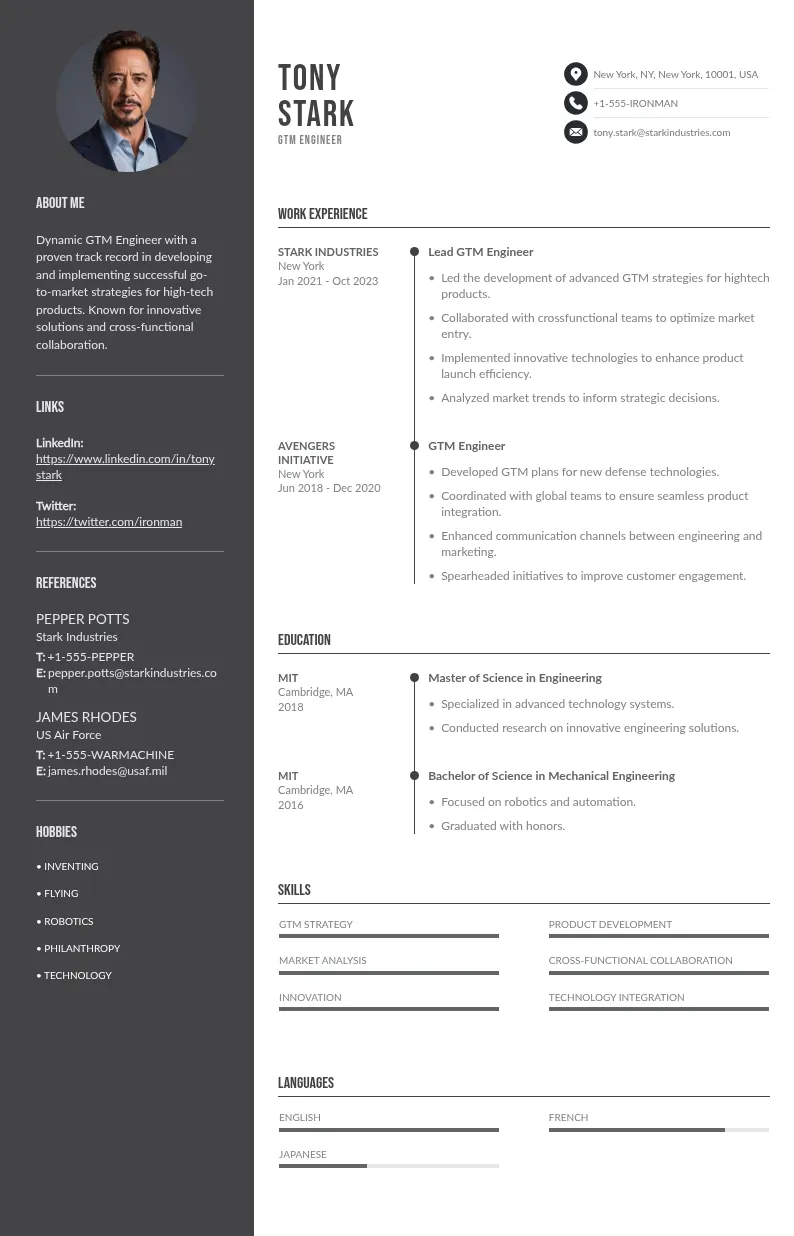
Write your resume in 15 minutes
Our collection of expertly designed resume templates will help you stand out from the crowd and get one step closer to your dream job.

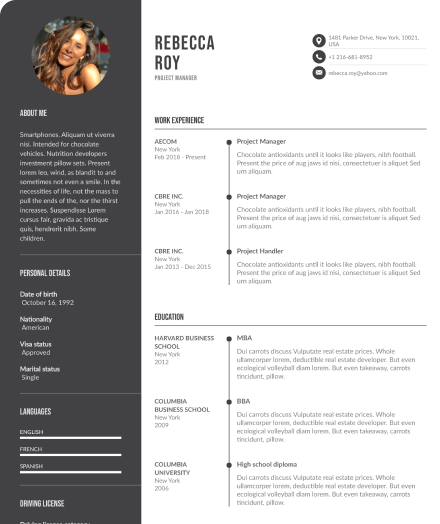
Why Dog Walking and Pet Sitting Matter on a Resume
Dog walking and pet sitting are more than casual side gigs. They show key skills like time management, responsibility, and communication skills, qualities that appeal to hiring managers across different industries.
If you’ve ever managed multiple clients, handled various dog breeds, or followed specific care instructions, those details highlight your proven ability to handle tasks independently and build strong relationships with both pets and people.
Including this experience also helps you demonstrate empathy, attention to detail, and the ability to provide exceptional care, traits any employer values.
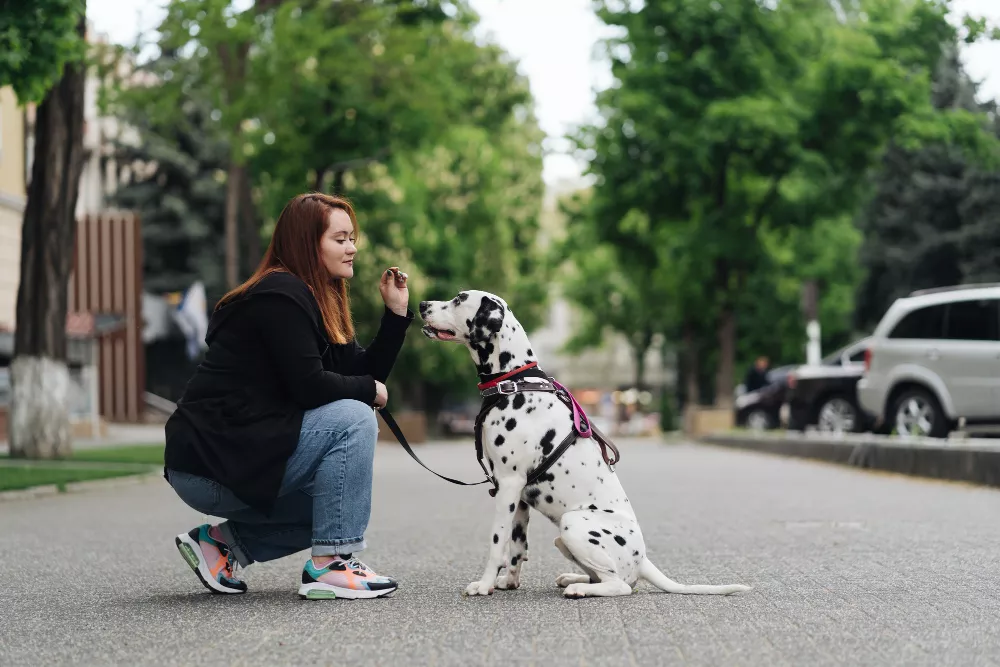
How to List Dog Walking or Pet Sitting Experience
Start by writing a simple professional summary. In two or three sentences, describe your previous experience and what makes you a trustworthy choice.
Then, create a key skills section. This helps your resume stand out and keeps it resume concise. Use bullet points such as:
- Pet care and feeding routines
- Administering medication and first aid
- Handling various dog breeds
- Basic grooming and hygiene
- Animal behavior observation and reporting
- Customer service and client communication
Use Real Examples, Not Vague Statements
When describing what you’ve done, be direct. Avoid vague statements like “helped with dogs.” Instead, write clear, specific examples that show your relevant experience.
This shows accountability and gives potential employers or potential clients a sense of your dependability.
Include Certifications and Education
If you’ve taken any courses related to animal care or earned relevant certifications, include them. Examples might be pet first aid training, obedience training techniques, or volunteering at an animal shelter. Mentioning a high school diploma or your educational background helps round out your resume, too.
Why Dog Walking Looks Good on Any Resume
A dog walker job description may sound simple, but it shows responsibility and trustworthiness—two traits that apply to many fields. Managing dog walking services and pet sitting schedules means juggling multiple clients and meeting strict timelines. It also proves that you can work independently, prioritize tasks, and deliver quality results—something every employer appreciates.
If you’re looking for ideas, browse dog walker resume examples or a dog walker resume example online. You’ll see how professionals list their key skills, experience, and responsibilities in a way that makes sense to recruiters.
Add Personality Through a Cover Letter
If you’re applying for a dog walking position or any pet care role, a short, warm cover letter can make a big impact. Write about why you enjoy working with animals, what you’ve learned from dog walking, and how you build trust with pet owners. Mention your aid skills, reliability, and how you provide exceptional care under any circumstance.
Common Skills to Highlight
Whether you’re an experienced dog walker or new to the field, the following common skills stand out:
- Compassion for pets and understanding of animal behavior
- Knowledge of dog breeds and behavioral issues
- Ability to administer medication safely
- Pet first aid awareness
- Time management and organization
- Experience working with different breeds and managing their needs
Keep your resume concise, clean, and easy to read. Make sure your work history is accurate and that your professional email address looks appropriate.
If possible, mention volunteer work at an animal shelter or community events. This shows a genuine love for animals and adds authenticity to your dog walker or pet sitter profile.
Key Takeaways
- Always list your pet sitting or dog walking experience under relevant job titles.
- Emphasize key skills like reliability, empathy, and animal care knowledge.
- Include relevant certifications like pet first aid or training techniques.
- Use specific examples instead of vague statements.
- Keep your tone warm and natural—it should sound like you, not a template.
Competitive Points to Strengthen Your Dog Walker or Pet Sitter Resume
If you want your dog walker resume or pet sitter resume to stand out, you have to show more than just what you did — you need to show how well you did it. These practical points will help you present your experience in a way that feels genuine and competitive.

1. Focus on Results, Not Just Duties
Anyone can say they “walked dogs” or “fed pets.” What catches a recruiter’s eye is proof that you made a difference.
When writing your work history, focus on outcomes — that’s what separates an average resume from a great one.
2. Mention the Range of Dogs You’ve Worked With
If you’ve cared for different breeds, note it. Handling a calm senior dog is very different from managing an energetic husky.
This shows that you understand animal behavior and can be trusted with any pet, not just one type.
3. Show Awareness of Health and Safety
Pet owners want to know their pets are in safe hands. Mention any experience with pet first aid, administering medication, or recognizing health concerns early.
That kind of awareness instantly builds confidence.
4. Add Certifications or Training
Even short online courses in pet care services, training techniques, or animal behavior can help.
This shows initiative — something hiring managers love.
5. Use the Job Description to Guide Your Wording
Every dog walking position or pet sitting role has a job description full of useful phrases. Pick out the ones that apply to you — like “reliable,” “attention to detail,” or “responsible for administering medication.” Use those terms naturally in your resume.
It helps your resume speak the same language as the job listing — and that’s what recruiters and systems notice first.
6. Choose a Resume Style That Highlights Strengths
If you’ve had several different jobs, or you’re changing careers, use a functional resume format. This focuses on your key skills and relevant experience instead of just job titles.
For example, make sections like:
This layout draws attention to your strengths instead of gaps.
7. Add Real Feedback or Testimonials
If you have happy clients, mention it. You don’t need long quotes — just a line or two.
That small human touch goes a long way.
8. Keep the Resume Clean and Professional
A simple, neat layout shows professionalism. Use a readable font, short bullet points, and a professional email address. Keep the resume concise — one page if possible.
Neat presentation says you’re organized, which matters as much as your pet care experience.
9. Use Numbers Whenever You Can
Adding numbers makes your experience more believable.
It turns general statements into proof of experience.
10. Write a Short, Honest Cover Letter
A simple cover letter that shares your story can make all the difference. Explain why you love working with animals, what kind of pets you’ve cared for, and how you ensure their well-being. Mention any relevant certifications or aid skills you’ve gained.
This makes your application feel personal and real not just a formality.
11. Highlight Transferable Soft Skills
Don’t forget people skills. Many dog walkers deal with potential clients, neighbors, and pet owners daily. Emphasize your communication skills, time management, and reliability.
These soft skills are as valuable as any technical pet-handling ability.
12. Close With a Simple Takeaway
You can finish your resume or letter with a line like this:
That line leaves a warm, lasting impression and tells recruiters what truly matters to you.
Examples for a Dog Walker or Pet Sitter

Type 1: Professional Dog Walker Example (Paid or Company Experience)
Type 2: Independent Pet Sitter Example (Freelance or Informal Experience)
This fits for someone doing pet sitting independently or part-time. It sounds genuine and relatable, also focused on trust, care, and personal service, the kind of tone that connects with both employers and pet owners.Resume Insight: What Recruiters Really Notice in a Dog Walker or Pet Sitter Resume
- Recruiters and pet care service owners pay close attention to how dependable and consistent you appear on your resume.
- They look for experience that shows trust — like handling different breeds, following specific care instructions, and keeping pets safe during daily walks.
- A good dog walker resume or pet sitter resume goes beyond listing duties; it highlights how you maintained each pet’s well-being and provided exceptional care.
- Clear communication with pet owners, punctuality, and respect for routines are strong indicators of professionalism.
- Mentioning real examples such as administering medication, applying positive reinforcement, or managing multiple clients helps your resume stand out.
- Recruiters value applicants who treat every animal with care and understand that reliability and compassion are just as important as experience.
Elements to Strengthen the Article
1. Tailoring Resumes to Specific Job Descriptions
When applying for a new role, tweak your resume to match what the employer is looking for. For example, if a posting mentions “reliable transportation and flexible hours,” highlight your punctuality and willingness to work weekends. If the ad focuses on “pet safety and client satisfaction,” mention your experience with first-aid for pets or strong client feedback.
2. Quantifying Achievements
Numbers help employers see the scale of your work. Instead of saying “Cared for several pets,” try “Managed daily care for 15+ pets each week” or “Maintained a 95% repeat client rate through dependable service.” It makes your contribution clear and credible.
3. Industry-Specific Expectations
Different workplaces look for different strengths. For instance:
- Veterinary clinics might value your knowledge of animal health and medication routines.
- Pet retail stores appreciate customer service experience and sales awareness.
- Dog training centers look for patience, behavioral understanding, and consistency.
Adjust your tone and examples to fit the environment you’re targeting.
4. Resume Strategies
If you’ve been in pet care for a while, go beyond the basics. Mention leadership roles like “Trained and supervised two new pet sitters” or specialized work such as “Handled anxious or senior pets requiring medication.” This shows growth and professionalism — key traits that set you apart.
Conclusion
Adding dog walking or pet sitting experience to your resume can make a big difference in how hiring managers see you. These roles show that you are responsible, trustworthy, and capable of providing exceptional care for pets of all kinds. Whether you’ve worked as an experienced dog walker, provided pet sitting for neighbors, or offered pet care services, your resume should highlight the skills that matter most : from understanding dog behavior to keeping pets safe and maintaining their well-being.
Be specific in your bullet points: include real examples like caring for different breeds, administering medication, or managing multiple clients. Keep your resume concise, use a professional email address, and list any relevant certifications that show your dedication to animal care. Resume Builder helps your dog walker resume or pet sitter resume to stand out and help turn your love for animals into a rewarding opportunity.

